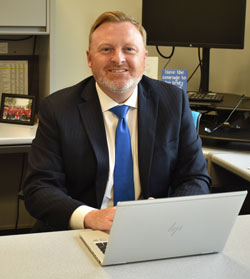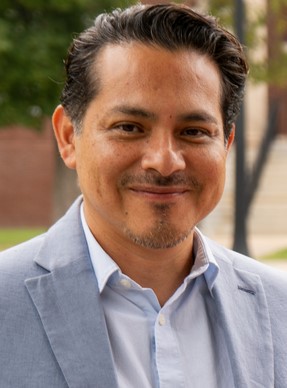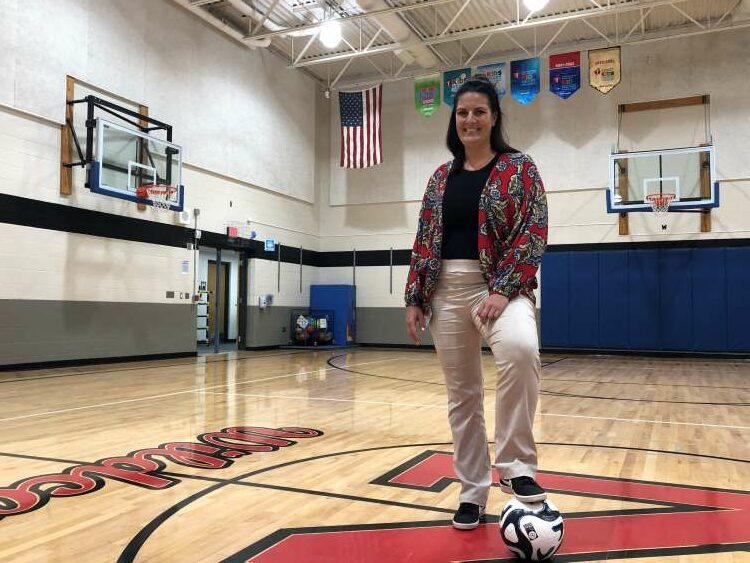Editor’s note: This is the second in a two-part series on the K-12 teacher shortage and its effects in Kent County. Read Part I here.
All Districts — A lack of teachers and school staff continues to take a toll locally, statewide and throughout the nation, leaving institutions and education leaders to wonder: What’s the solution?
From reexamining pay scales to embracing grants, alternative pathways to teacher certification and other supports, school districts are doing what they can to right the ship.

Well aware that compensation is a contributing factor, schools are starting to offer pay incentives to make the teaching profession more appealing — and to help retain educators for the long haul.
That’s according to Ron Gorman, Kent ISD’s assistant superintendent of instructional services and former interim superintendent of Grand Rapids Public Schools.
“I’m actually seeing a glimmer of hope with some of the teacher contracts that have been coming to fruition these last few years, with some of these pay increases,” said Gorman, noting that the West Ottawa and Detroit public school districts boosted starting salaries to $50,000 per year.
Gorman said school boards and superintendents are “very sensitive” to the pay issue and “trying to do what they can to increase wages,” especially for new educators.
Promising Programs
Several initiatives are underway to tackle the issue from various angles.
A $19 million grant — part of the newly launched West Michigan Teacher Collaborative — aims to address some of the financial barriers to joining the profession.
The grant supports a joint effort between the Kent, Muskegon and Ottawa ISDs and Grand Valley State University. It comes from the Michigan Department of Education’s Future Proud Michigan Educator grant program.
The initiative will allow anyone with a bachelor’s degree or higher — in any field — to complete a one-year residency program with a salary and a $20,000 stipend, wrapping up the year with a teaching certificate and a guaranteed full-time teaching job. It also offers a program to help people complete bachelor’s degrees in the first place, and it covers endorsements and advanced degrees for current teachers and consultants.
Kelloggsville, Kentwood and Rockford public schools have also received grants from the fund for their teacher development efforts. The grants are part of “historic investments” by the state to increase the teacher supply, said Gov. Gretchen Whitmer in announcing a newly signed law allowing retired teachers to return to work without losing their retirement benefits.
‘Education has taken a shift where there are more challenges than there ever has been before.
— Carrie Tellerico, Kentwood Public Schools executive director of elementary education
Time is of the essence.’
Filling the Gap
Raúl Hernández Guzmán, talent development, retention and diversity recruitment manager at GRPS, said his team is looking to student teachers to help fill gaps. The district is considering how to bolster retention of student teachers while helping them secure full-time positions at GRPS.

“These students are with us for either a semester or a year,” Guzmán said. “The goal is to develop those relationships with them to create better, stronger community engagement and to recruit them and retain them.”
Guzmán said GRPS is also casting a wider net to attract new talent, looking state- and nationwide.
There are also efforts to recruit internationally, he said, noting that GRPS is working to bring in teachers from Spanish-speaking countries to offset a shortage among bilingual teachers as well.
“GRPS is a very diverse district,” he said. “Our scholars represent more than 80 different countries, and 70-plus different languages, so we want to make sure that our teachers accurately represent the same populations we have in our classrooms.”
GRPS has also revamped its career website to be more accessible and user-friendly to applicants.
The work seems to be paying off, as the number of vacant teaching positions at GRPS is down from around 250 in fall 2022 to 117 in late September.
Mentors Can Make a Difference
Sparta Area Schools has built up a mentorship program to help new teachers find their footing, earn the requisite credit hours to keep up with state standards and, hopefully, stay with the district.
Newcomers are matched with veteran educators to make sure incoming teachers have everything they need.
The program is now in its fourth year, and with three years as the window for teachers to earn the 90 hours of professional development they need, there’s not quite enough data to determine how successful it’s been in terms of teacher retention. However, Megan Taylor, a 25-year educator who mentors at Ridgeview Elementary, said the response has been positive.
“The people that have come have just been so appreciative,” Taylor said. “It’s more than we’ve ever had in our district in terms of support for teachers coming in.”
‘Educators need to be respected. We need everybody just to continue to praise our teachers.’
— Ron Gorman, Kent ISD assistant superintendent of instructional services
Mentor teachers at Sparta are now being given additional compensation for going the extra mile, Taylor said, which has boosted morale for everyone involved.
“The mentors are feeling valued and the mentees know there are people here to support them and welcome them,” Taylor said.
Supporting Their Own
In Kentwood Public Schools, Debbie Schuitema and Carrie Tellerico see firsthand the need to keep people in the teaching profession as they work with teachers districtwide who are at all stages of their careers.

The director of new teacher development and executive director of elementary education, respectively, are helping coordinate Kentwood’s work as one of six districts involved in TeachMichigan, a state-funded $30 million initiative to invest in the retention and development of high-impact educators working in under-resourced schools across Michigan.
Their goal is to help keep teachers in Kentwood growing in their craft and impacting students for years to come.
“Education has taken a shift where there are more challenges than there ever (have) been before. Time is of the essence,” Tellerico said. “Also, people being honored for their work is very important. And people investing in their growth is just as impactful as … investing in our students.”
GRPS is also involved in the program. Guzmán said there are nine TeachMichigan fellows currently with the district.
Nurturing New Teachers
Some districts, like Northview Public Schools, are trying to generate interest in education early on.
Northview is one of the districts offering Student Educators and Listeners (SEAL) programs, year-long classes that introduce juniors and seniors to careers in K-12 education by having them help teachers. In early 2020, before the coronavirus shuttered classrooms, there were some 50 SEALs in Northview’s classrooms.
Many return. Most recently, after several years as an elementary teacher in Wisconsin and at Northview, 1998 NVHS graduate Angie Balczak began this year as principal at North Oakview Elementary, where she was a SEAL.
Balczak planned to major in engineering in college, but needed another social studies credit her senior year. Someone suggested she join the teacher cadets, and after a semester in now-retired teacher Judy Johnson’s North Oakview kindergarten class, Balczak was hooked.
She has been in the district’s elementary buildings for 17 years, and was named this year as principal of the school where she was a cadet.
“I’d always liked kids, and I had babysat a lot (in high school),” Balczak said. “But coming here every day and getting that experience, something in me was just like, ‘I want to do this instead. And I haven’t looked back.’”

Trying Other Angles
Alternative teacher certification processes in Michigan have spurred people to pursue teaching as a full-time career.
The programs are attracting more candidates and resulting in higher completion rates than traditional certification programs, said Guzmán. He added that those processes are a path toward a potential “light at the end of the tunnel.”
Karl Nelson, executive director of pre-K-12 instructional leadership for the northwest quadrant of GRPS, agreed, stressing that institutions should support “any program that lifts up and provides opportunities for growth and development.”
“The more the merrier,” Nelson said. “I think it just provides an opportunity for growth in the school system.
“And we need good people. We need the right people,” he added. “We need good educators to do the work.”
Gorman said the various efforts to recruit and retain teachers are promising, as are the pay increases. But the incentives don’t signal an imminent end to the shortage.
‘Coming here every day and getting that experience, something in me was just like, “I want to do this instead.” And I haven’t looked back.’
— Northview Principal Angie Balczak, a former high school teacher cadet
“If things are getting better — significantly better — districts wouldn’t have to do those things, but they’re still doing those things,” he said.
Gorman stressed that there are social, emotional and interpersonal components to consider as well, like making teachers feel respected, empowered and uplifted.
“I think we need to do a lot more to pump up the profession,” he said. “It’s a profession that makes all other professions possible. It truly is. Educators need to be respected. We need everybody just to continue to praise our teachers.”
And while there’s hope, Gorman thinks it’s going to take some time to fully resolve the issue.
“We know it’s not going to happen overnight.”
Reporter Morgan Jarema and Managing Editor Erin Albanese contributed to this report.
Read more from Issues in Education:
• Restorative circles create safe space at the top of the day
• ‘It’s really all about providing equity’









